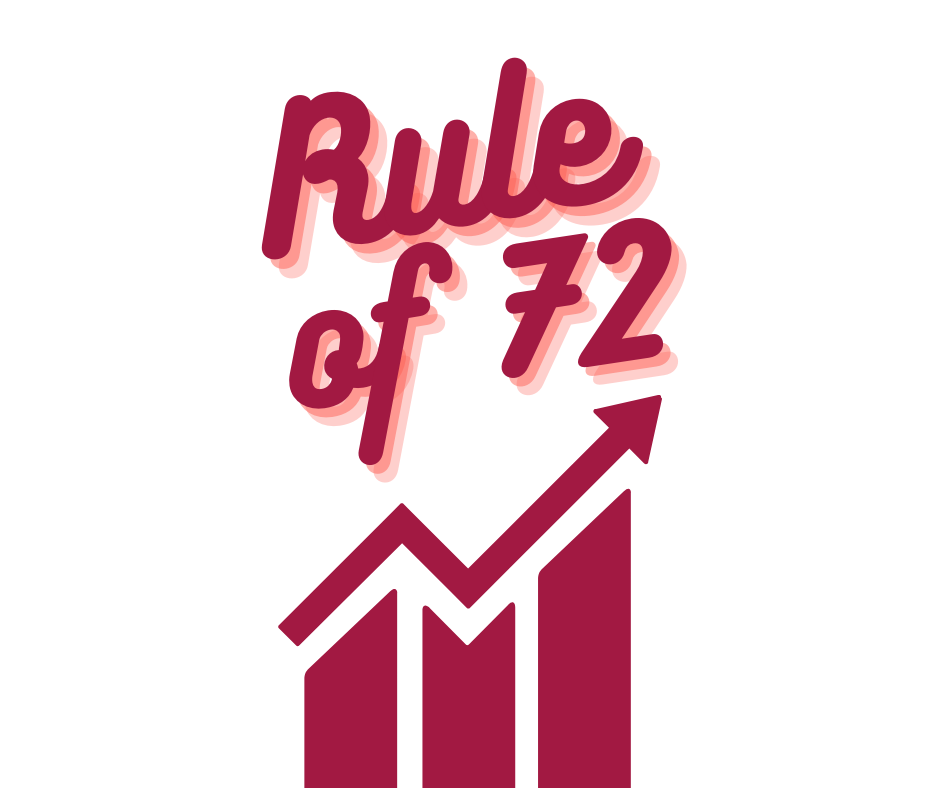Tips and Tricks: The Rule of 72

BLUF: The Rule of 72 is a quick way to estimate how long it takes to double your money. Divide 72 by your percentage return, and the result is the number of years needed to double your money. For example, a 6% investment doubles in 12 years (72 ÷ 6% = 12 years). You can also divide 72 by the number of years you have to invest, and it will give you the return you need (i.e. 72 ÷ 12 years = 6% needed to double).
“You know the rule of 72, divide the number into 72, any number you want, and that’s how long it will take your money to double.” –JOHN C. BOGLE
There is a simple trick for estimating how long is needed to double your money: The Rule of 72. This is exceptionally useful, especially in trying to guess how much money you could have in retirement.
How does it work?
Start with the number 72. Then divide by the expected rate of return. That tells you how many years it will take to double your money.
Example: 72 ÷ 6% return = 12 years to double your money
Or….
Start with the number 72. Then divide by the years you will invest your money. That tells you what rate of return you’ll need to double your money in that time.
Example: 72 ÷ 6 years to invest = 12% return needed to double your money
How is this useful?
Scenario 1: How much money do I actually need to have in my accounts when I retire?
Deciding how much money you need to retire requires some guesswork and assumptions. One way to calculate this is to start with how much you need each year and multiply by 25. This is based on the idea that you should live off 4% of your nest egg each year, which will hopefully continue to grow at least 4% through conservative investments.
Example: If you need $80,000 per year in retirement, you could start by multiplying that by 25x. This gives you a starting number of $2,000,000.
However, you aren’t done yet. You still need to calculate inflation. *This is because you need $80,000 in _today’s dollars_, and the amount you actually need in retirement will need to be adjusted for inflation. Estimating 3% inflation, you could always calculate it… or, you can estimate using the Rule of 72.
Example: 72 ÷ 3% inflation = 27 years before the amount needed doubles.
So, If you retire in 27 years, then you’d need double your original amount ($4,000,000) to have the same spending power. If you retire in 54 years, you’ll need to save $8,000,000.
Scenario 2: How much could my investments be worth in the future?
Another scenario to use the Rule of 72 is trying to determine if you are likely to hit your retirement goals. If you know the amount of inflation-adjusted money you need to retire (following the steps from Scenario 1), you can also use the Rule of 72 to see if what you currently have invested is close to enough.
For example, if you have $100,000 invested now, will you have enough to retire in 35 years (if you need $1,000,000 in inflation-adjusted dollars)?
Example: Start with 72 ÷ 6% estimated return = 12 years. So, your money would likely double every 12 years… up to $200,000 in 12 years, $400,000 in 24 years, and $800,000 in 36 years.
If you have about 35 years until retirement, you would estimate that you should have just below $800,000 at that time… and fall short of your $1,000,000 goal. Luckily, you would still have 35 years to save and invest the difference!
Note: This Rule is great for estimating, but not predicting the future. Millions of things could prevent you from reaching your estimated goals, so please use this as a general guide and not gospel.
Note #2: This Rule also assumes a steady return, which will usually not be the case. Returns spike up and down every year. Low (or negative) early returns could massively drop your final investment net worth, while higher early returns will raise it. I’d suggest recalculating your investment performance annually to ensure your targets are on track.